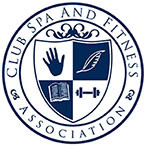How to Increase Your Metabolism
You’ve no doubt heard it a time or two: fitness clients laying the blame of being overweight on a slow metabolism. It’s true that heavier people have a slower metabolism because the more weight the body has to carry, the more energy is expended supporting the weight rather than burning fat calories. Everyone’s metabolism works the same way, but the rate at which our bodies burn calories is unique to every individual. Factors other than weight also play a role in a person’s metabolic rate:
Age. Metabolism naturally slows down as we age. From about age 30 on, it slows by approximately 1 to 3 percent each decade.
Gender. Men usually have a higher metabolism because they tend to have more muscle than women. Muscle mass greatly impacts metabolic rate.
Genetics. Some people inherit a slower metabolism, and certain medical conditions are also a cause of slower metabolism.
Activity. Activity level plays a significant role in how fast or slow a person’s metabolism is.
Increase Your Metabolism
Luckily, it is possible to increase your metabolism (in most cases). Your clients may not have control over their age, gender or genetics, but they do have control over how active they are and what they eat. Your training sessions can help them engage in the physical activity that’s needed to rev up metabolism:
Aerobic exercise. Getting the heart rate up during aerobic exercise is ideal for improving metabolism. It produces a longer rise in the basal metabolic rate following a workout, allowing muscles to burn away calories. Include increments of intense aerobic workout mixed with slower paced intervals in your clients’ workouts to stimulate the fat-burning reaction inside of muscles.
Muscle up. People with more muscle have a higher basal metabolic rate—the rate at which the body burns calories while at rest. One pound of muscle uses about six calories a day to maintain itself, while one pound of fat burns only two calories. Include strength training drills in your clients’ routines to build up their muscle mass to burn more calories per day.
There are also dietary considerations that can play a role in increasing metabolism. Here is some advice you can pass along to your clients:
Eat a healthy, hearty breakfast. Breakfast truly is the most important meal of the day because it boosts metabolism for the rest of the day. A meal that includes a lean protein, a complex carbohydrate and healthy fats will reap the most benefit. Skipping breakfast or eating empty calories such as high-sugar choices causes the body to go into starvation mode and slows metabolism down to conserve energy.
Eat frequent snacks/meals. Eating more often can help with weight loss. When we eat a few meals with many hours in between, metabolism slows down between meals. Having a small meal or healthy snack every three to four hours keeps metabolism active and burning more calories over the course of a day. Just be sure to choose healthy, low-calorie snacks to keep from piling on the calories.
Up the protein. Including protein-rich foods in every meal helps to build and maintain lean muscle mass, which burns more calories than fat does.
Coffee and tea. Studies have shown that drinking coffee and tea can give metabolism a boost. The stimulants in coffee increase heart rate and breathing, which impact metabolic rate, and green tea contains a plant compound that promotes fat burning.
Make sure your clients are getting the right balance of aerobic and muscle-building exercise, and talk to them about their meal habits to reinforce the importance of making good choices that aid metabolism. That should get them on the path to the weight loss and fitness level they desire.
Get more tips for personal fitness trainers.
Customer Feedback
-
Thank you so much for your prompt response. Might I add, Veronica was a delight to work with and her professionalism and attention to detail made this an overall pleasurable experience.

Earl W.




















